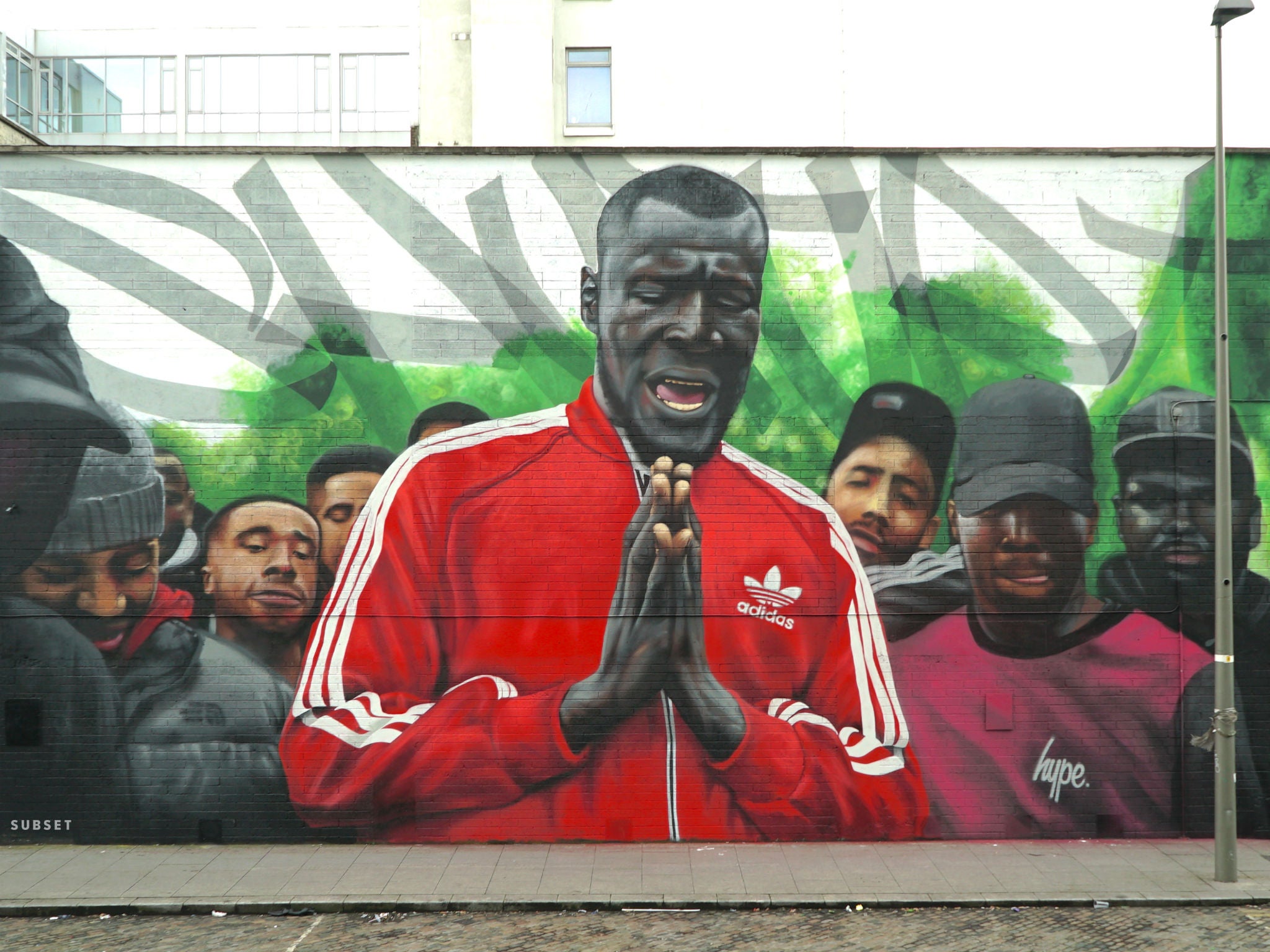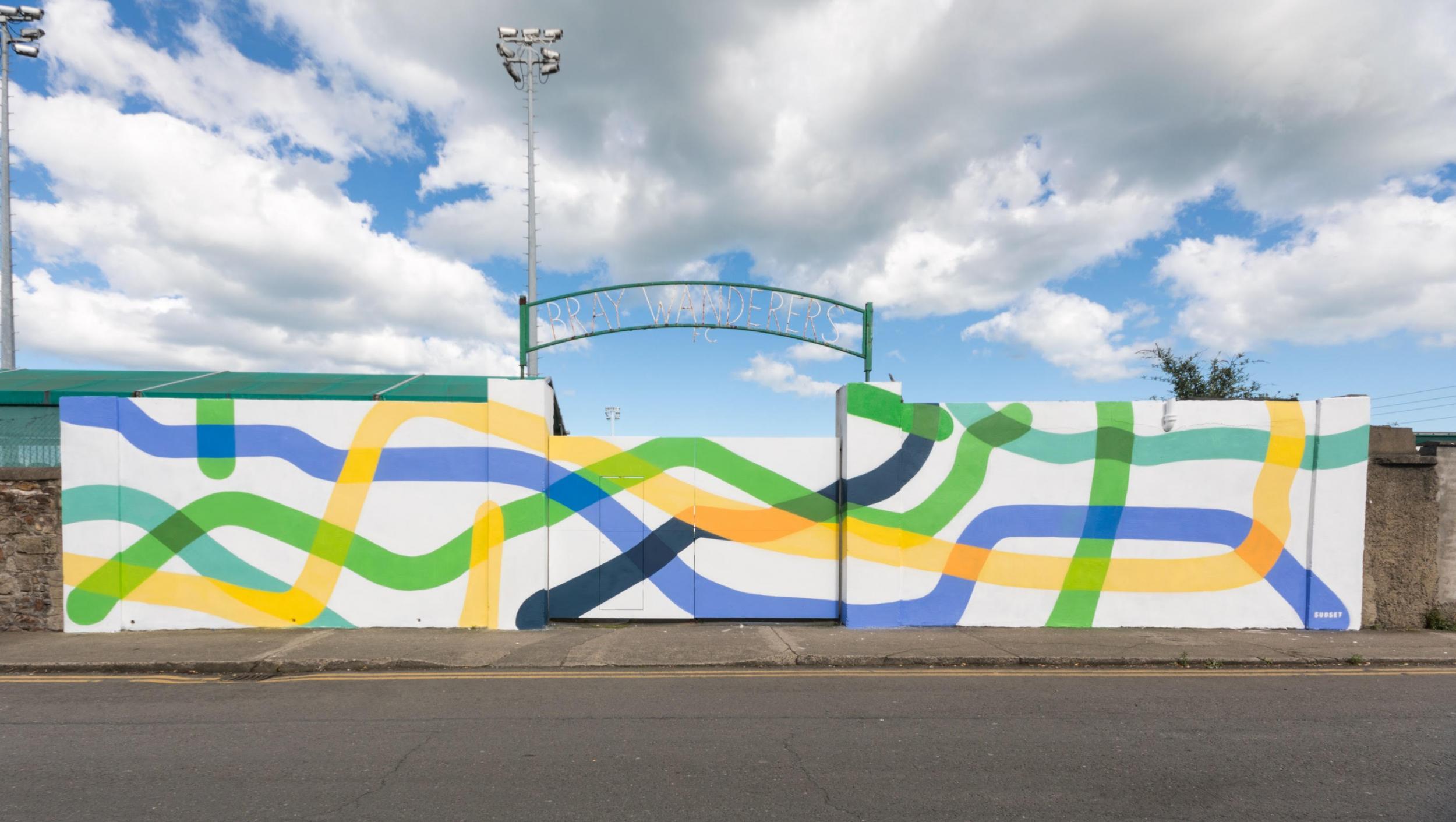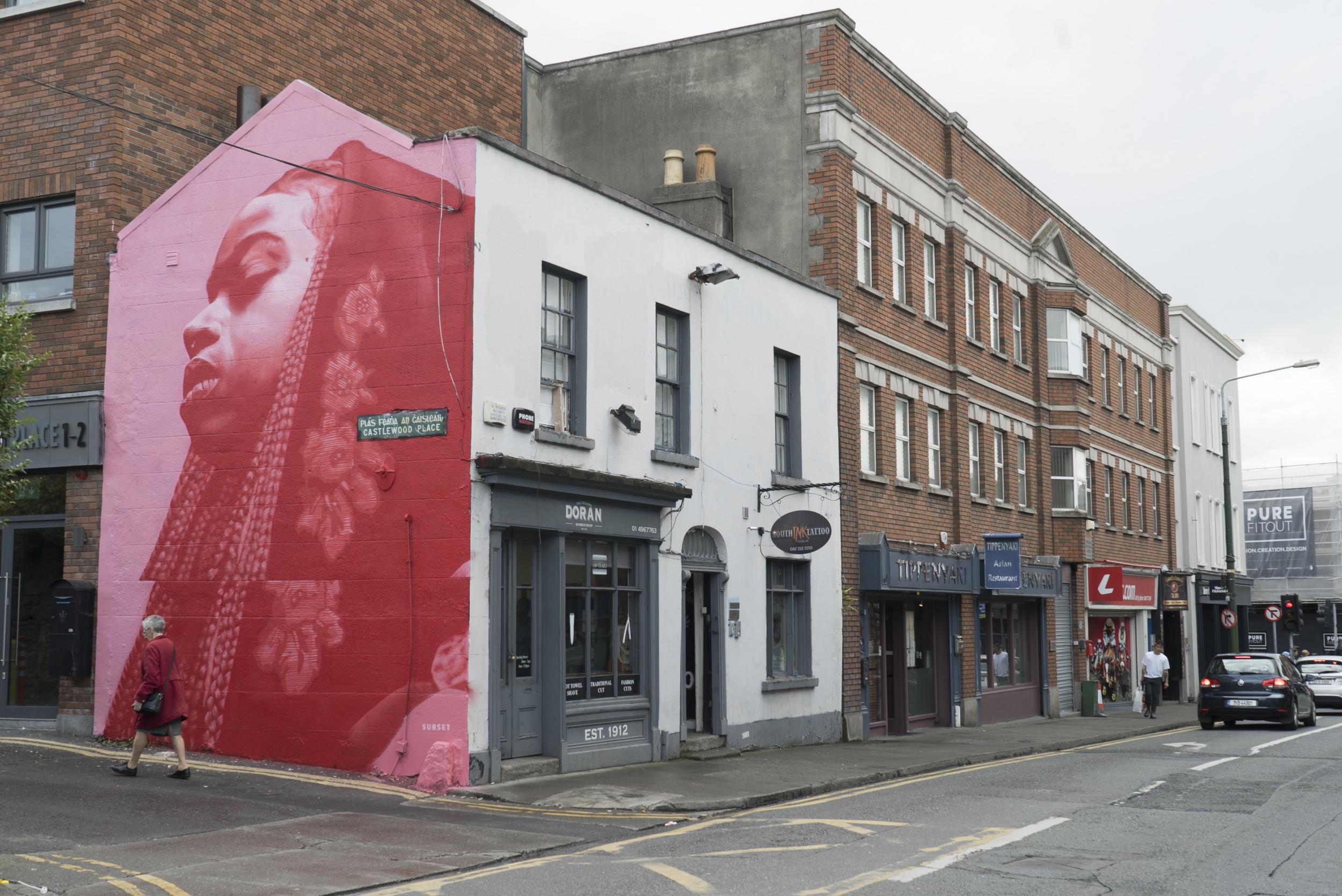Grey Area: The secret art collective battling the council to bring colour to the streets of Dublin
SUBSET have been painting large-scale artworks around the city – but following complaints, Dublin City Council has ordered their removal

Your support helps us to tell the story
From reproductive rights to climate change to Big Tech, The Independent is on the ground when the story is developing. Whether it's investigating the financials of Elon Musk's pro-Trump PAC or producing our latest documentary, 'The A Word', which shines a light on the American women fighting for reproductive rights, we know how important it is to parse out the facts from the messaging.
At such a critical moment in US history, we need reporters on the ground. Your donation allows us to keep sending journalists to speak to both sides of the story.
The Independent is trusted by Americans across the entire political spectrum. And unlike many other quality news outlets, we choose not to lock Americans out of our reporting and analysis with paywalls. We believe quality journalism should be available to everyone, paid for by those who can afford it.
Your support makes all the difference.There is no real answer to the greyness. Anyone who has been to Dublin will know this. Dublin looks well in the grey. Dublin suits the grey. If Dublin was going on a night out, it would wear a little grey dress.
But there are a group of artists who are seeking to change this.
“We want Dublin to be an open-air gallery,” a member of the SUBSET collective tells me. They have asked to to remain anonymous due the legal implications of their work.
Since breaking onto the scene over a year ago with their infamous Stormzy mural, the collective have been working towards this lofty goal. Their production of large-scale, brightly coloured artworks have attracted a considerable amount of praise within the city – and pockets of disdain.

They’ve painted photo-real depictions of the presidents of Ireland and the United States – both of which have been served with orders to repaint. They’ve painted both Kanye West and Kendrick Lamar, with the latter giving the group a shout-out during his sold-out Dublin show. They’ve painted large-scale artworks everywhere from the inner city to the outskirts of the Pale, but wherever they go their work divides opinion.
The conflict is around what constitutes public art and what is simply a public nuisance.
Despite the aforementioned Stormzy piece achieving iconic status for those within the city and becoming a minor tourist attraction for those outside, the group were ordered to repaint it grey in December. Apparently, the council had received a number of complaints about the piece and was obliged to follow up all objections.
“At the end of the day, Dublin City Council are public servants, and we don’t feel they’re best serving the public by approaching the situation the way they are,” the SUBSET spokesperson tells me.

“The sort of rhetoric that we’re constantly receiving is: the law is the law. We appreciate and respect your talents, skill set, what you’re attempting to do for Dublin and Ireland, but our hands are tied.”
The Dublin City Council press office was contacted for a comment for this piece, but did not respond.
The law in question is one of planning. As it stands, any form of street art currently falls foul of the Planning and Development Act (2004) as it constitutes a major alteration to the exterior of a building. The fact that SUBSET’s work is painted on private property with the consent of the owner matters little to the council. As far as they see it, any work – artwork or otherwise – that has not received prior permission is in breach of the law and should be removed.
“You have to remember, what we might paint in a day or five days, it can be removed in three hours,” the collective’s spokesperson says. “So all the hoopla around that [Stormzy piece], and all the waste of time and public money, and people becoming incensed over it… that was then painted over in three hours. So it’s completely different than if someone goes and builds an apartment complex with no planning permission.”

The problem becomes even more complicated when you look at the process of costing public art. There is no category for street art within the planning process application and the closest thing you can get to it is “advertising”, which is priced at €20 per square metre. This means that if you were to price the above mentioned Stormzy piece under the current framework, it would cost €4,563 before any materials are included.
But Dublin City Council would argue it is only applying the law. The only way to change it is to go through government. SUBSET have contacted both the minister for arts and the minister for housing and planning with draft legislation that they would like to see implemented, but have yet to hear back from either.
“The channels that are there now for us to make the change that we want to make – if we were to abide by those channels – we’d be years waiting and toing and froing, and we’re not about that. We like to get things done really quickly,” the spokesperson says.

This much is obvious. In February, the group launched the Grey Area Project in order to highlight what they see as the inconsistencies within the system. The plan was initially for a series of 25 artworks to be produced over the course of two months, but they have decided to extend the project indefinitely in order to keep their conversation alive.
“The only way we’re going to reach a resolution is if we continue to push forward with Grey Area. If you really want to elicit a change or keep the momentum going you have to stay current,” the spokesperson tells me. “We felt the best way to express our disdain for the system that governs the production of large format artwork was by producing large format artwork.”
While this may make them sound like a group of renegade artists, the truth is much more complex. SUBSET don’t fit the usual image of artists who simply want to screw the system. They seem pretty happy to work within the law, if they feel like the law at least in part reflects what they’re trying to achieve.
“We’re not saying we should just carte blanche paint wherever we want whenever we want; that’s obviously not what we’re looking for. We understand whatever is done has to be sustainable, has to make sense, and has to be considerate of everyone, really”.

They’re also not afraid to take on commercial work. Since launching as SUBSET in March 2017, their list of clients include Paddy Power, BMW, Conor McGregor, Dublin Airport Authority and even Dublin City Council themselves. The group were commissioned to do a piece as part of the Canalaphonic festival with the DCC, and are currently working on another project together.
“They still took the time to meet with us. They’re still engaging with us,” their spokesperson says. “We want the same thing. The city council want a better Dublin and so do we”.
Despite this, the two parties cannot agree on what this better Dublin should look like. They both claim to value art and creativity, but cannot agree on where the boundaries of this creativity should lie. They both believe there should be rules to govern this system, but cannot agree on what these rules should look like.
Ultimately, the line between public art and public nuisance remains a grey one.
Join our commenting forum
Join thought-provoking conversations, follow other Independent readers and see their replies
Comments